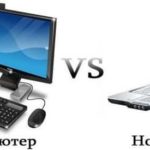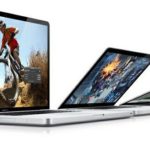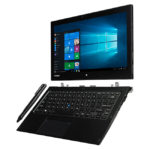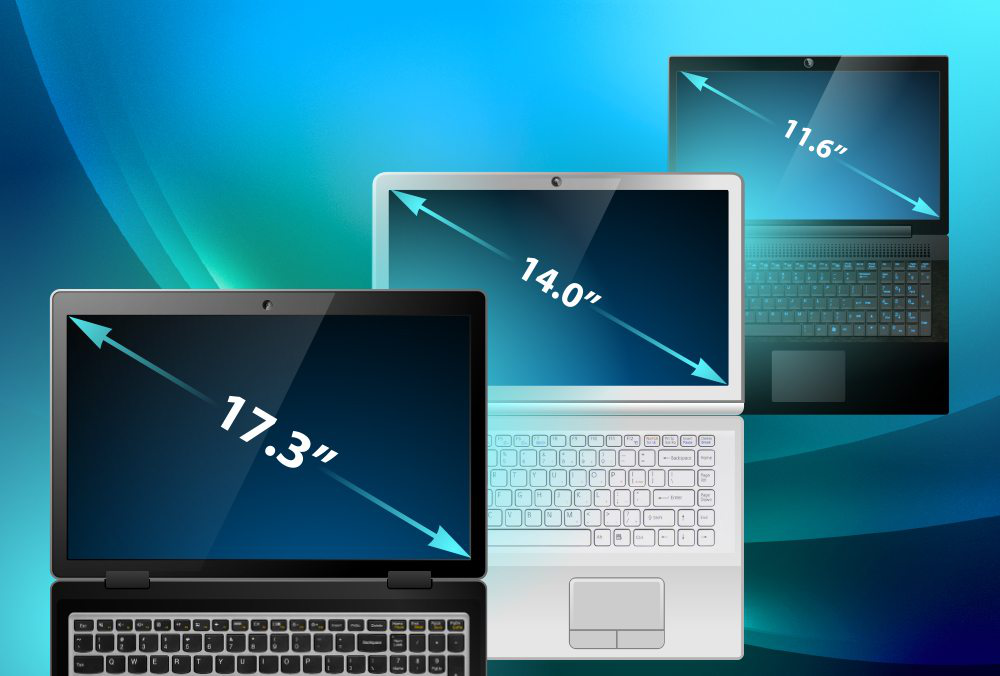What is the difference between a netbook and a laptop?
When choosing electronics, an inexperienced user may get confused by the names. Especially when purchasing a laptop PC. We came to the store and saw the names of the devices on the price tags: netbook, laptop. Only at first glance they are one and the same. We will tell you what parameters these models differ in, their advantages and disadvantages in our material.
The content of the article
Netbook what is it
The term denotes a mobile device with a keyboard; its purpose is surfing the Internet, watching videos (standard quality) on the road, solving standard tasks in office programs, reading e-books. It is lightweight and compact in size.
It can be installed and is compatible with Windows and Linux systems.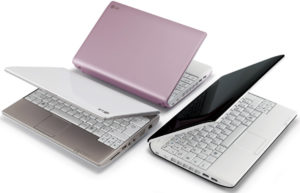
Important! To purchase a quality product, it is better to pay attention to well-known manufacturers (Asus, Samsung, etc.), as its stable operation and long service life are guaranteed.
Advantages and disadvantages
The device has key advantages:
- Compact size, making it convenient to take on the road, use in the car, carry around the apartment, put in a bag and work in any environment.
- Weight does not exceed 1.5 kg.
- Operating systems provide low power consumption, which saves battery consumption. Without recharging, you can work up to 8 hours.
- The hard drive (if any) has reduced sensitivity to vibrations, does not create noise and reduces power consumption.
- RAM in inexpensive products is modest in size - up to 2 GB, but it is enough to perform manipulations on the device.
- Support for wireless interfaces.
- Affordable price. Standard models without technical frills can be purchased for 9-10 thousand.
Flaws:
- The display has a reduced diagonal (on average 10 inches), which makes it inconvenient to work with large images or tables.
- Technological filling. This could be Intel Atom, AMD, VIA. In terms of speed and other properties, they are inferior to laptop processors. They also do not work with applications that require computer resources.
- The minimum number of connectors for external connections (card reader, output for display and audio, sometimes HDMI). This can be a problem when using an additional keyboard and other devices when there are not enough ports.
- The miniature size of the keys and their close location complicates and slows down the typing speed. There are models without functional buttons, this also creates difficulties for the user. The keyboard is difficult to clean from dust and dirt.
- There is no optical drive; there is no space for it inside the model. However, using, for example, a removable one will solve this problem.
- The size of the hard drive is limited to 160 GB, with low operating speed; in the cheapest devices it is replaced by an SSD drive of minimal capacity.
- There is no video card that supports modern games. The graphical interface is limited, and the most expensive devices will struggle to ensure the speed and stability of new applications for photo processing, editing and other complex tasks.
- There is no system cooling, which can lead to overloading the processor and reducing its performance.
- Upgrading components is difficult, and costly repairs will be required if any parts fail.
Laptop what is it
This is the name of a portable PC, the case of which contains a standard set of components (display, input and output devices), which has a battery life. It is distinguished by the breadth of tasks performed and the variety of built-in tools.
The line includes the simplest devices, including only the necessary functionality, and models that can compete with powerful desktop computers. Accordingly, their price can vary tens of times.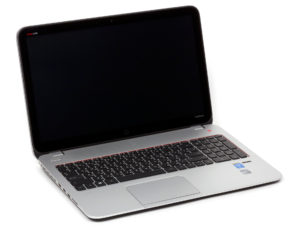
Advantages and disadvantages
Technical equipment and capabilities in different models may vary significantly.
The most advanced laptops have maximum capabilities:
- Large displays (up to 17 inches and above), with maximum resolution.
- Touch screen, presence of a touchpad along with the keyboard.
- A video card that supports modern games.
- Increased pixel density (affects image clarity).
- New processors with up to 6 cores, high performance.
- The size of RAM is up to 32 GB with the availability of increasing it.
- Hard drive up to 1 TB and SSD (drive without moving parts) up to 500 GB.
- Ability to work in complex and resource-demanding programs while maintaining speed and efficiency,
- Protection from mechanical influences and moisture.
- The cost of such devices reaches 200 thousand rubles and more, corresponding to the “price plus quality” ratio.
On a note. Laptops lose their mobile qualities as the screen size increases.
Disadvantages mainly relate to models in the lower price segment; they usually lack:
On a note. The weight of the product varies up to 5 kg, which may make it difficult to carry frequently. If maximum mobility is required, pay attention to this option when choosing.
- HDD drive.
- Video card to support games and 3D graphics.
- Characterized by low performance and a minimum number of connectors.
- The common disadvantages of all laptops can be considered higher cost (including in comparison with stationary PCs), difficulty in upgrading and replacing components. In some devices it is impossible to install another operating system, since the manufacturer has not provided support for them.
- The number of connectors does not always meet the owner’s needs, especially if you need to connect many external devices. In this case, you will have to spend money on a special external component USB HUB, which has at least 4 connectors.
- In case of breakdowns, expensive repairs will be required, since some parts of the device will be technically difficult to replace.
Important! All models, even expensive ones, lack an optical drive. There is no cooling system, which can lead to overheating due to accumulated dust and failure. You can purchase cooling pads, which will incur additional costs.
The main differences between a netbook and a laptop
Let's trace the above characteristics using the example of specific devices in the budget segment, and compare them with each other.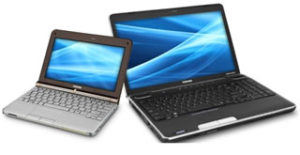
The Irbis NB105 netbook has the following parameters:
- 10.1-inch display;
- resolution 1280x800, WXGA standard;
- pixels per inch 149 ppi;
- 4-core Intel Atom chip;
- Windows 10;
- RAM 2 GB;
- drives (SSD) 32 GB;
- built-in video camera, microphone;
- Wi-Fi, Bluetooth;
- USB, mini HDMI, 3.5 jack ports;
- battery 5600 mAh.
The average price is 9,000 rubles.
The Prestigio Smartbook 141 C2 laptop is equipped with the following functionality:
- screen 14.1 inches, 1920x1080, FullHD;
- pixel density 156 ppi;
- Dual-core Intel Celeron processor;
- Windows 10;
- RAM 3 GB;
- built-in camera, microphone;
- wireless Internet;
- USB, mini HDMI, 3.5 jack;
- battery 5000 mAh;
- weight 1.5 kg.
The cost is within 13 thousand rubles.
Differences:
This laptop is superior to its counterpart in screen size and resolution, processor speed and efficiency, and RAM size. The manufacturer valued these advantages at 4 thousand rubles.
Now let's compare devices in the expensive segment.
Netbook Acer Aspire 1 A111-31-C8RS:
- display 11.6 inches, 1366x768, HD, 135 ppi;
- Dual-core Intel Celeron processor;
- Windows 10;
- RAM 4 GB;
- SSD 32 GB;
- built-in camera, microphone, stereo speakers;
- wireless network support;
- USB, mini HDMI, 3.5 jack;
- battery 4810 mAh;
- weight 1.2 kg;
- Kensington lock (prevents the device from being stolen).
The average price is 20,000 rubles.
The Lenovo IdeaPad 320-15IAP laptop has the following parameters:
- screen 15.6 inches, 1366x768, HD, 101 ppi;
- Dual-core Intel Celeron processor;
- DOS operating system;
- RAM 4 GB;
- a cell for a memory card (together with the main chip it can double the value);
- HDD disk 500 GB;
- built-in camera, microphone, advanced acoustics;
- memory card support;
- Wi-Fi, Bluetooth;
- USB, mini HDMI, 3.5 jack;
- battery 4000 mAh;
- weight 2.2 kg.
The cost is within 20 thousand rubles.
The laptop shows an advantage in display size, has a cell for expanding RAM, and also benefits significantly due to the presence of a hard drive.However, the DOS system will not appeal to all users who are accustomed to working on devices running Windows.
The netbook stands out for its large number of pixels per inch and battery capacity.
On a note. The same cost makes buying a laptop more practical and profitable in this case.
So, let's draw conclusions, what's the difference?
A netbook is suitable for solving simple tasks, surfing the Internet for mobile people who need such a compact assistant. As the price rises, its advantages begin to diminish compared to a laptop.
A budget laptop will allow you to watch movies, listen to music, and play simple browser-based applications on the Internet. With it you can be in bed or sit on the sofa. It can be called a mobile version of a PC.
Expensive brands are suitable for those who need high performance, the ability to play the latest games and work in resource-intensive applications. However, such options significantly lose their mobility, so it’s worth thinking about: shouldn’t you buy a full-fledged stationary PC for the same money?
The reader will decide for himself which type of device to choose. Devices are presented in stores to suit the most demanding tastes. It all depends on financial capabilities, preferences and required functionality.

